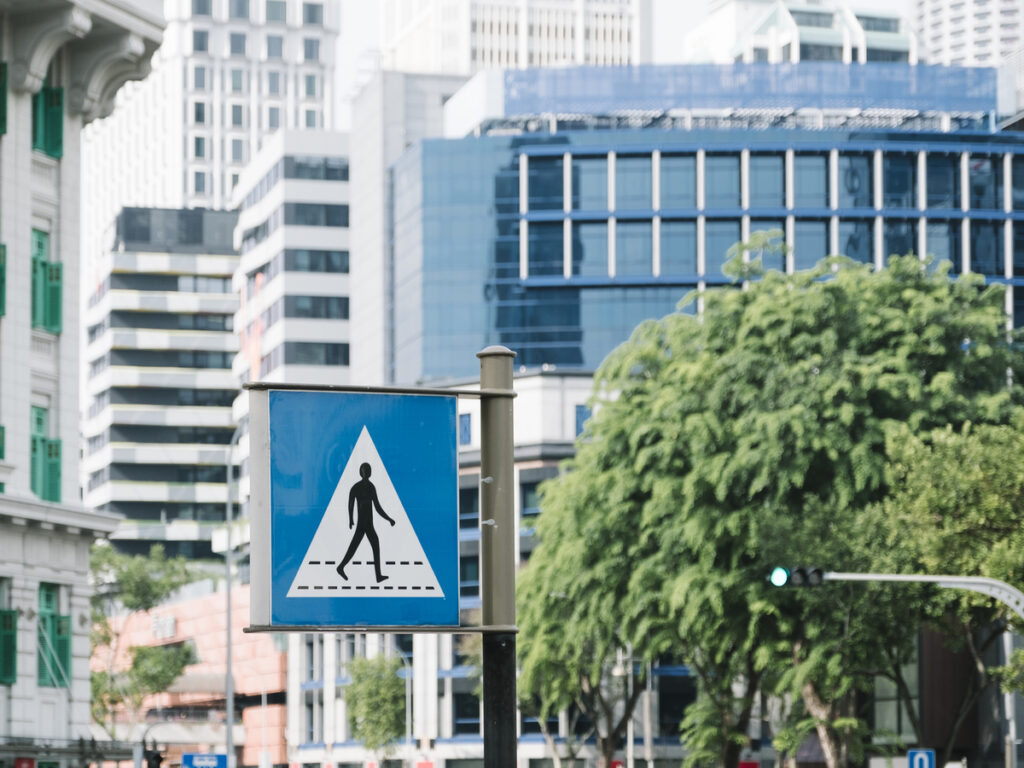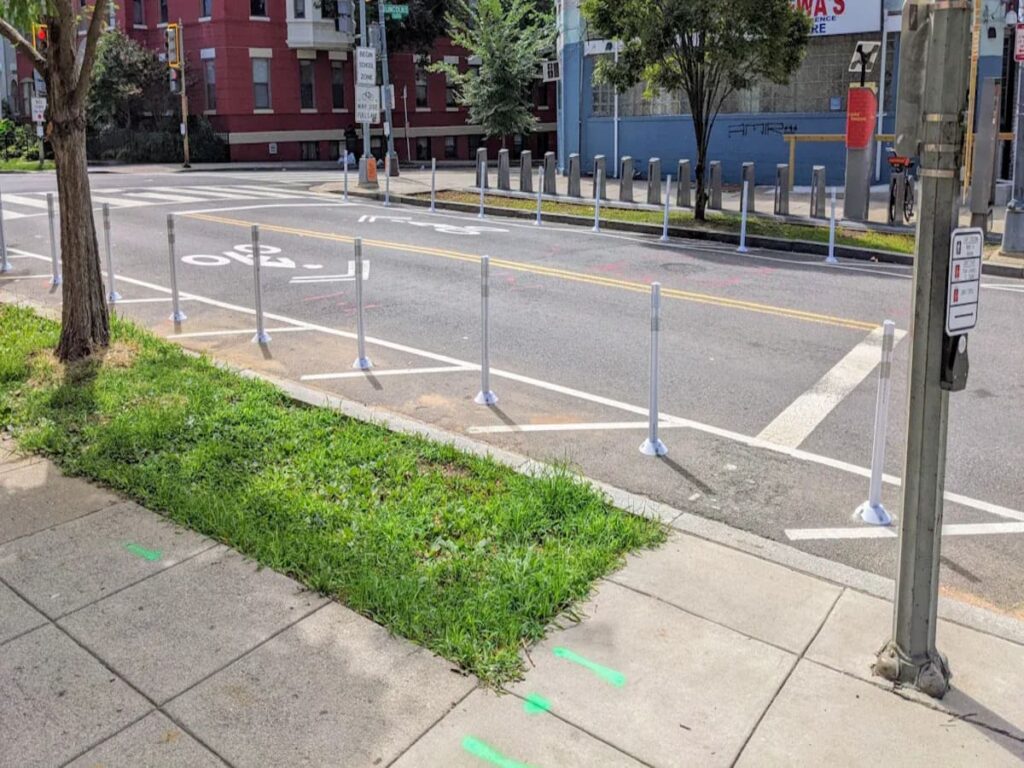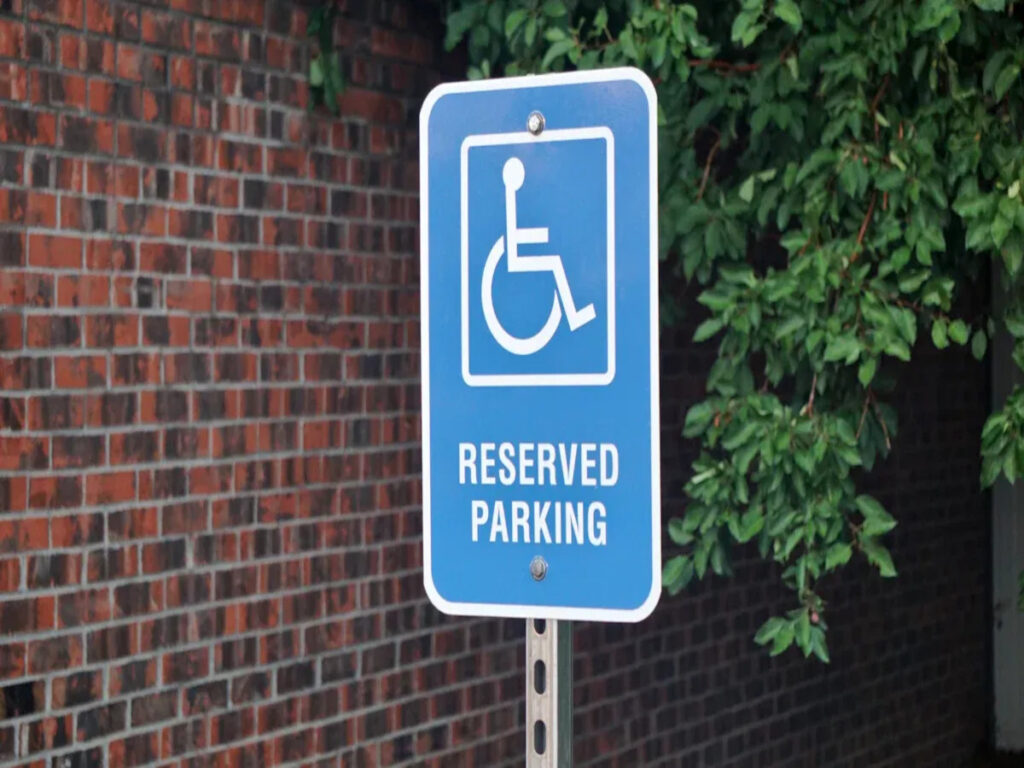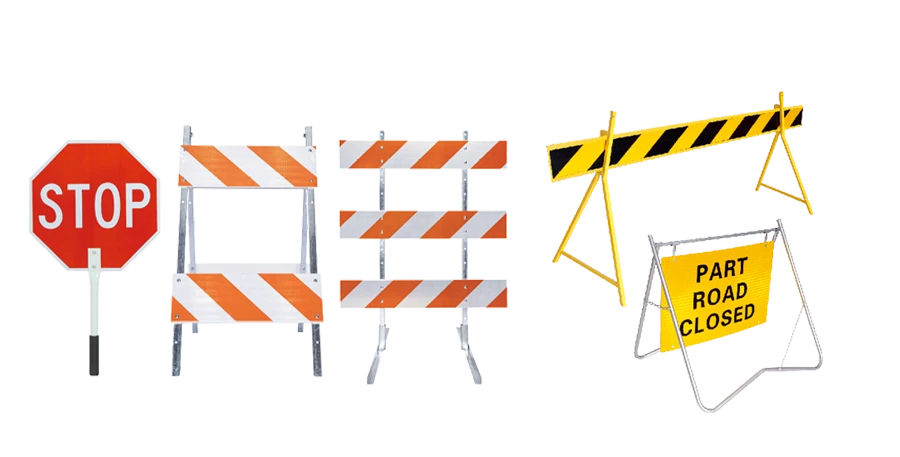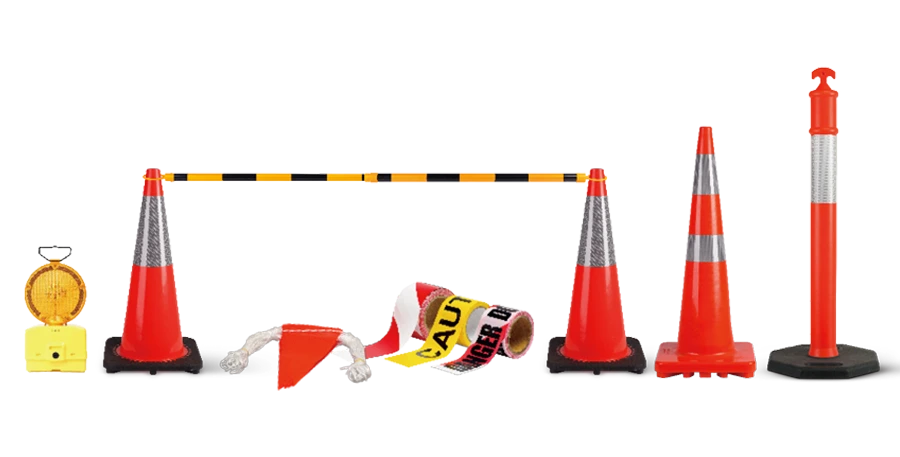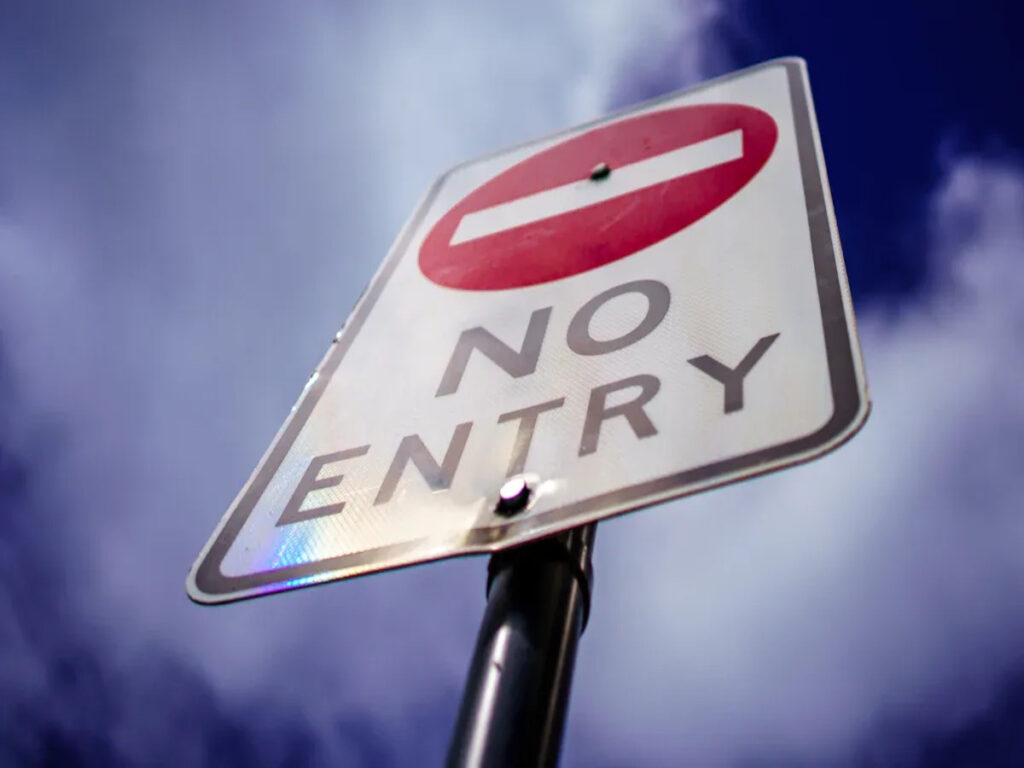
VMS cannot take the place of STOP, VORFAHRT BEACHTEN, or NO ENTRY signs. This is because of legal, Sicherheit, and technical reasons. These signs give rules that drivers must follow. VMS only give advice to drivers. Static regulatory signs make sure people obey the rules. They help keep everyone safe on the road. Electronic signs can sometimes lower traffic violations better than static signs. But Australian law does not let VMS replace important traffic control signs. People need clear and permanent signs to stay safe and keep order.
That’s why OPTRAFFIC supplies fully compliant STOP, VORFAHRT BEACHTEN, KEIN EINLASS, and other Verkehrskontrollschilder, along with high-performance VMS displays. If you’re managing roadworks, Umwege, or long-term infrastructure projects, OPTRAFFIC has the certified signage solutions to keep your site safe and fully compliant.
Key Regulatory Signs Defined Under AS 1742

STOPPEN (R1-1), VORFAHRT BEACHTEN (R1-2), and NO ENTRY (R2-4)
STOPPEN, VORFAHRT BEACHTEN, and NO ENTRY are very important static signs. These signs are found at junctions and road entrances. Stoppschilder (R1-1) make every car stop fully before moving. Geben Sie nach Zeichen (R1-2) tell drivers to let others go first if needed. Drivers can go if the road is clear. NO ENTRY signs (R2-4) stop cars from going onto roads where it is unsafe or confusing. These static signs are the main part of normal traffic signs. Sie helfen, die Straßen für alle zu schützen.
Role in road priority, conflict management, and access restriction
These static signs help decide who goes first on the road.
- STOP signs are used where it is hard to see or crashes happen often.
- GIVE WAY signs are used where cars can go if it is safe.
- NO ENTRY signs stop cars from going the wrong way.
| Zeichentyp | Function at Intersections | Conditions for Use | Role in Managing Priority and Conflicts |
|---|---|---|---|
| STOPPEN | Cars must stop completely | Schlechte Sichtbarkeit, fast roads, or many crashes | Makes sure cars let main traffic go first |
| VORFAHRT BEACHTEN | Cars let others go if clear | Good visibility, not too fast | Helps cars move smoothly and safely |
| KEIN EINLASS | Stops cars from entering | Stops unsafe entry | Stops cars from breaking road rules |
These static signs lower the chance of crashes and show who should go first. They help drivers make safe choices at junctions. They also keep cars moving the right way.
Legal enforceability and design standards
Australian rules say these static signs must be followed by law. The rules say how big, what shape, and what colour each sign must be. STOP signs are always octagonal. GIVE WAY signs are always triangular. Only static signs that follow these rules are legal. Police and cameras can check if drivers obey these signs. Schilder, die nicht den Regeln entsprechen, können Autofahrer verwirren und Unfälle verursachen. Councils and road managers must make sure all static signs follow the latest rules.
Notiz: Only static signs that follow Australian rules can be enforced by law.
Required sizes and placement guidelines from AS 1742.2 und as 1743
ALS 1742.2 Und ALS 1743 give the rules for sign size and where to put them. The rules use size codes (A to D) for different roads. Bigger signs are used on faster or busier roads. All static signs must be easy to see day and night. The rules say where to put signs so drivers can see them in time. Councils and road managers must follow these rules for all static signs, even for temporary ones at roadworks.
Normal traffic signs must always follow Australian rules. These static signs cannot be swapped for vms. Vms do not follow the strict rules for static signs. Only static signs give the clear legal meaning and safety needed for traffic control signs.
VMS Signs and Their Classification

What is a Variable Message Sign (VMs)?
Variable Nachrichtenzeichen, called VMS, are electronic signs. They show changing messages to help people on the road. These signs use LED lights so drivers can see them in any weather. Portable VMS can be moved to new places when needed. This makes them good for roads that change often. VMS give updates about traffic, Straßenarbeiten, und Notfälle. They can change their message quickly, unlike normal signs. VMS help keep people safe by warning about dangers or changes ahead.
- VMS show changing messages to help manage traffic.
- Portable VMS can be moved for short-term needs.
- Bright lights make sure drivers see the messages fast.
- VMS help keep people safe during emergencies or crashes.
- Changing signs can help stop traffic jams and help drivers react.
Definition and scope under AS 5156 and state traffic codes
Australischer Standard als 5156 and state rules say what VMS are. These rules tell how to design, verwenden, and set up VMS. Portable VMS must be easy to see and read. The rules make sure VMS give changing messages but do not replace normal signs. VMS are important for emergencies, gesperrte Straßen, und Verkehrskontrolle. But VMS only give advice, keine Regeln.
Advisory nature of VMS: why it’s not a substitute for static signs
VMS give changing messages to help drivers, but they are not the law. Portable VMS can warn about dangers or new road changes. But drivers still have to follow the normal signs. VMS can help where normal signs cannot change, but only normal signs are the law. VMS are easy to see and give more information, but they cannot take the place of normal signs.
Notiz: VMS help keep roads safe, but only normal signs are the law.
Visual differences and how they impact driver behaviour
VMS look different from normal signs, and this changes how drivers act. Die folgende Tabelle zeigt die Hauptunterschiede:
| Visual Feature | Roadwork VMS Signs | Advertising VMS Signs |
|---|---|---|
| Nachrichtentyp | Kurz, clear messages for quick reading | Moving, colourful messages with pictures |
| Text Colour and Display | Amber LED with white writing on black for seeing well | Hell, colourful lights with eye-catching designs |
| Zweck | Important safety messages in work areas | Ads that must not distract drivers |
| Compliance Influence | Clear rules help drivers follow directions | Moving messages can make drivers lose focus |
| Regulierungsstandards | Must follow strict road rules | Must follow ad laws and get permission |
| Driver Behaviour Impact | Helps drivers stay safe and understand the road | Can take attention away, so must be used with care |
VMS are bright and help drivers see messages quickly. Changing messages get attention, but normal signs help drivers know the rules. Portable VMS can be moved, but normal signs are always needed for safe roads.
Legal Risks of Misusing VMS to Replace Regulatory Signs
Driver confusion and liability implications
If road managers use portable vms instead of static signs, drivers can get mixed up. Portable vms show messages that change often. Drivers might not know which sign to follow. This can make them do the wrong thing at intersections. If a driver listens to a portable vms and not a static sign, crashes can happen. People want clear rules when they drive. When vms take the place of important signs, safety goes down. Road authorities could get in trouble if vms confusion causes a crash.
Case examples: VMS showing “KEIN EINLASS” without static R2-4 sign
Some roads use portable VMS to say “KEIN EINLASS”. If the right static R2-4 sign is not there, drivers might not get the message. Zum Beispiel, a portable VMS might say a road is closed, but if the static sign is missing, drivers might still go in. Police cannot use a VMS message to give fines like they do with real signs. This makes traffic control weaker and puts people in danger.
Invalid traffic control orders and their legal consequences
Traffic control orders must follow strict rules. If a road manager uses portable VMS instead of static signs, the order might not be valid. Courts might say the order does not meet the law. This can mean fines or other punishments for the road authority. People might stop trusting traffic managers if the rules are not clear or legal.
Police enforcement limitations and court challenge risks
Police use static signs to make sure drivers follow the law. Portable VMS do not have the same legal power. If a driver gets a fine from a VMS message, they might fight it in court. Judges often agree with the driver if the right static signs are missing. This makes it hard for police to keep roads safe. Road managers should use portable VMS to help, not to replace legal signs.
Notiz: Only static signs have full legal power for traffic rules. Portable vms cannot take this job.
Why STOP and GIVE WAY Cannot Be Replaced by VMS
STOP and GIVE WAY signs establish legal right-of-way
STOP and GIVE WAY signs are very important for road safety. These static signs tell drivers who must stop and who can go first. Drivers use these signs to know what to do at intersections. The law in Australia says these signs have legal power. Road markings like STOP lines and GIVE WAY lines mean the same as the signs. Drivers must follow these rules to stop crashes and keep people safe. If there are no static signs or lines, drivers must let cars from the right go first. At T-intersections, drivers turning from the end road must let all cars on the main road go first, except those making a U-turn. When lanes join together, drivers must let cars already in the lane go first. These rules show how static signs and markings help control traffic and lower risks.
ALS 1742.2 prohibits VMS use in place of these regulatory signs
Australischer Standard als 1742.2 says VMS cannot take the place of static STOP or GIVE WAY signs. The rule says static signs must be used for all important instructions at intersections and other key places. VMS can give extra information, but only static signs have the legal power for traffic control. Road construction traffic signs must always have these static signs to follow the law and keep roads safe. VMS do not meet the strict rules for shape, Größe, and where to put the signs. This rule keeps drivers safe and helps keep order on the roads.
Risk of intersection collisions or traffic violations
Taking away static STOP or GIVE WAY signs makes crashes and rule-breaking more likely. Studies show that putting up warning signs like SIGNAL AHEAD lowers crashes and red light running. If static signs are missing, drivers may not react fast enough, so more accidents happen. One study found that when only flashing amber signs were used, many drivers did not slow down and some ran the red light. This shows static regulatory signs are needed for safety. Without these static signs, public safety is at greater risk, especially where roads are busy or tricky.
Why these signs must remain even near signalised intersections or roadworks with VMS
Static STOP and GIVE WAY signs must stay even if VMS are used near traffic lights or roadworks. Research shows VMS often do not make drivers change what they do. Many drivers do not slow down or change lanes when VMS give warnings. Static signs give clear, legal instructions that drivers know and follow. These static signs warn drivers about dangers before they get there. This helps drivers react faster and make safer choices. In road construction, static signs make sure drivers can see and read the signs, alle schützen. VMS can help static signs, but they cannot replace the safety and power that static signs give. Normal traffic signs, especially static ones, are still the most important for safe and good traffic control.
State-Level Enforcement Policies Across Australia
NSW: Use of VMS restricted to advisory use only – RMS guidance
In New South Wales, portable VMS are used for short-term traffic control. The Roads and Maritime Services (RMS) say VMS can only give advice. These signs cannot take the place of static road construction traffic signs at intersections or for stopping cars from entering. RMS says VMS should help by warning drivers about changes, Straßenarbeiten, or dangers. Police and traffic officers use static signs to enforce the law. Portable VMS give extra help but do not have legal power for traffic control signs.
Vic: VicRoads mandates static signage at intersections and road closures
Victorias VicRoads has strict rules for road construction traffic signs and portable VMS. Static signs must always be at intersections and road closures. VicRoads says:
- Signs must be placed where drivers can see them.
- Signs must be high enough so drivers can see under them.
- Messages must be approved and not used for ads.
- Brightness must be controlled so signs do not shine too much at night.
- Letters must be big and easy to read.
- Red means warning, Gelb bedeutet Vorsicht, white on black gives information.
- Signs must be fixed so they do not fall or move in bad weather.
- Signs need a good power source, often solar with batteries.
These rules make sure static signs and portable vms help keep roads safe and traffic moving. Only static signs meet the law for traffic control signs.
Qld: TMR requires regulatory signs for detours, Schließungen, und Einstiegsbeschränkungen
Queensland’s Department of Transport and Main Roads (Tmr) says static road construction traffic signs must be used for detours, Schließungen, and stopping cars from entering. Portable VMS can give updates about traffic or changes, but they cannot take the place of regulatory signs. TMR’s rules keep traffic control clear and stop confusion. Drivers look at static signs for legal rules, while portable VMS give quick alerts about roadworks or changes.
Role of local councils in approving temporary sign setups
Local councils in Australia check temporary traffic control plans. Councils look at road construction traffic signs and portable VMS to make sure they follow state rules. They check that signs do not block what drivers see or stop traffic from moving. Councils also make sure portable VMS only show allowed messages. This keeps people safe and helps traffic move well during roadworks or events.
Räte, state agencies, and police work together to keep roads safe and traffic moving. Static signs and portable vms both help, but only static signs have the legal power for traffic control signs.
Proper Use of VMS in Conjunction with Regulatory Signs
When and how to use VMS to support, not replace, key signs
Portable VMS are important for road construction traffic signs. They give changing messages to help static signs, especially when things change fast or in emergencies. Road managers use portable VMS to tell drivers about dangers, Umwege, or how to stay safe in work zones. These signs should never take the place of static signs. Stattdessen, they make signs easier to see and help drivers learn new rules. In Notfällen, portable VMS can quickly warn about sudden changes, but static signs are still needed by law.
Best practices for placement and sequencing
Putting portable vms in the right spot helps keep roads safe. Road construction traffic signs must not block cars or people walking. Portable vms should be easy for drivers to see early, but not block views at intersections. Signs need space from bridges and big vehicles. Site checks help find dangers like blind corners or sharp turns. Road managers must work with councils to follow the rules. The order matters: put static signs first, then portable vms for extra help.
Beispiele: Sperrsperrungen, Umwege, work zones with STOP/GIVE WAY supervision
On real roads, portable VMS help with lane closures and detours. Truck-mounted VMS move fast for emergencies, using flashing lights to get attention. Trailer-mounted VMS stay in one place for longer jobs, helping static signs like STOP or GIVE WAY. Rolling roadblocks use cars with portable VMS to slow down traffic safely. These ways help keep work zones safe and make sure drivers follow the right signs.
Signage hierarchy: static signs always override VMS messaging
In Australien, static signs are the most important. Static signs set the main rules for traffic and safety. Portable vms give changing messages to help, but never go against static signs. If a portable vms says something different, drivers must listen to the static sign. Road construction traffic signs must always be clear and match each other. Agencies check messages to stop confusion and keep roads safe. Keeping static and portable vms messages the same helps drivers trust the signs and keeps work zones safe.
Designing Compliant Traffic Plans: Our Support
Integration of VMS into compliant traffic control plans
Good road construction traffic signs need careful planning. Teams must use portable vms with static signs to follow australian standards. Portable vms help drivers notice changes fast. Static signs give the rules drivers must obey. Traffic managers use portable VMS to warn about dangers, Spurwechsel, oder Umwege. They put up static signs first, then add portable VMS for extra help. Hier entlang, all rules are followed and traffic stays safe. Teams check often to make sure signs are clear and correct.
Consultation and design services for road contractors and event organisers
Road contractors and event organisers need expert advice for road construction traffic signs and portable vms. Many companies offer different services to help with safety and following the rules:
- Early advice from the start to the end of the project.
- Help with both slow and fast roads, including lane closures and crossings.
- Teams trained to national rules, making sure they follow australian standards.
- Making special static signs and hiring out portable vms, Barrieren, und Ampeln.
- Special help like traffic studies, collecting data, and emergency help.
- Traffic Management Coordinators working with client teams for better results.
- Digital tools to make roads safer and keep people updated.
- Ongoing help with setting up, Festsetzung, and checking portable vms.
These services make sure all road construction traffic signs and portable vms follow the rules.
Providing fully compliant layouts with AS 1742/AS 1743 Beschilderung
All road construction traffic signs must follow Australian standards. Layouts must use the right sign sizes, Formen, und Materialien. STOP signs must be octagonal and GIVE WAY signs must be triangular. Signs need special materials so drivers can see them in bad light. Both new and old signs must meet the latest rules. Local councils check that all signs follow these rules. Teams look after signs so they stay clear and easy to read. Sign plans must list the right codes and sizes for each sign. This makes sure every road construction traffic sign and portable VMS helps keep roads safe and legal.
Notiz: Following australian standards keeps road users safe and lowers risks.
Example use case: roadwork detour with VMS and static NO ENTRY signs
A normal roadwork detour uses both portable VMS and static signs. Zum Beispiel, if a road closes, teams put static NO ENTRY signs at the entrance. Portable VMS show messages about the closure and tell drivers where to go. Static signs show the rule, and portable VMS give live updates. This mix follows all the rules and keeps traffic safe. Drivers get clear directions and stay away from danger. Teams check often to make sure all road construction traffic signs and portable VMS are in place and easy to see.
Abschluss: Always Respect the Role of Permanent Traffic Control Signs
Zusammenfassung: VMS is an enhancement tool, not a replacement
Portable vms help with traffic today. These signs show new messages fast. They help drivers know about changes on the road. But static signs are still the most important. Static signs tell drivers the rules they must follow. Portable vms give extra help, but they do not have the same legal power. Portable vms can warn about dangers or help during roadworks. Trotzdem, static signs must always be there to keep people safe and keep order.
Notiz: Portable vms give new updates, but static signs always set the rules.
Reiterate the non-substitutive role of VMS in legal signage
Portable VMS cannot take the place of static regulatory signs. Static signs must have the right shape, Größe, und vor Ort. These rules help all drivers understand what to do. Portable VMS can change their messages, but static signs have the legal meaning. Traffic control signs must follow the law to keep people safe. Portable VMS help, but only static signs can give orders and keep roads safe.
| Art des Zeichens | Role in Traffic | Legal Power | Nachrichtentyp |
|---|---|---|---|
| Statische Zeichen | Set rules | Ja | Dauerhaft |
| Portable vms | Give updates | NEIN | Dynamisch |
Contact us for advice on compliant traffic sign solutions for your project
Every traffic job needs both static and portable VMS. Road managers and event organisers can ask us for help. Our team helps plan and pick the best portable VMS. We make sure all signs follow the law. Good advice keeps people safe and traffic moving well. If you have questions about static or portable VMS, contact us for help.
FAQ
What is the main purpose of vms in traffic management?
Vms give drivers live updates about the road ahead. They warn people about dangers, Änderungen, oder besondere Veranstaltungen. Vms do not take the place of regulatory signs. They help everyone travel safely by sharing news fast.
Can vms display regulatory instructions like STOP or GIVE WAY?
Vms are not allowed to show rules like STOP or GIVE WAY instead of static signs. Only static signs have the legal power. Vms can remind drivers about rules, but they cannot replace the real signs.
How do vms improve safety during roadworks?
Vms tell drivers about roadworks, geschlossene Gassen, or detours coming up. They help drivers get ready for changes and stop confusion. Vms make drivers notice work zones and help static signs keep everyone safe.
Are vms effective at night or in poor weather?
Vms use bright LED lights so drivers can see them in the dark or rain. Drivers can read the messages any time of day. Vms make sure drivers get important news, Auch wenn das Wetter schlecht ist.
Who decides where to place vms on the road?
Traffic authorities and local councils choose where vms go. They look at the road, Wie einfach es ist zu sehen, and what is safest. Vms must not hide static signs. Good placement helps drivers get clear news on time.

